
Alongside traditional screw terminal technology and recently, with the rising popularity of quick connection technology, spring cage technology for connecting electrical cables has become increasingly established in the last few years. In particular, spring cage technology has played the leading role in industrial wiring. The following elucidates the requirements currently being made of this technology, and how we can meet these requirements.
High-quality contact
It is still the case that classic screw terminal technology offers the highest contacting force for connecting a cable. Physical constraints mean that this force cannot be as high for spring cage terminals, but it must still be sufficient enough to make a mechanically and electrically secure contact with the cable. This requirement places high demands on the choice of material for the spring elements, and on the connection chamber and electrical contact design. Particular attention has to also be devoted to user-friendly operation, since users have to be able to overcome the contact force more or less immediately with the tool they are using, in order to open the cage to insert the cable. Here already, one can see the limitations on the usability of this technology for cable cross-sections greater than 35 mm2. The latest spring cage terminals, such as Phoenix Contact's ST product family, are designed to give the best possible contact resistance while still offering good ease of use (Figure 1).
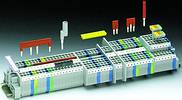
Further technological requirements
Spring cage terminals are suitable for wiring both flexible and rigid cables. Using flexible cables with metal end sleeves presents a special case. In the early days, many spring cage terminals were designed for clamping normal stripped flexible and rigid cables; one needed to use the next biggest cage size for flexible cables with metal end sleeves. Among the reasons for this was that to clamp a cable with a metal end sleeve on it, the cage needed to have a larger opening. The IEC 60947-1 standard defines plug gauges for measuring these types of cage spaces or openings: it must be possible to insert them into the cage without applying force (Figure 2).
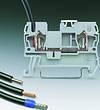
It is true that having a larger connection opening for a given spring geometry does allow that spring to open further when the mechanism is operated. This places a greater strain on the spring, which can plastically deform if incorrectly-dimensioned. This leads to reduced spring and hence contact forces. Modern CAD and especially FEM (finite element method) systems have enabled the spring cage used in the ST range to be optimised so that while exterior dimensions are 30% smaller, the cable connection opening still meets the IEC plug gauge standard. At the same time, the spring does not lose any of its force through plastic deformation (Figure 3).
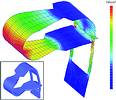
Spring clamps in device connections
It required viable miniaturisation to make spring cage technology interesting for applications such as switching devices. It is also with exactly this type of device that the customer wants to be able to connect two cables to each connection. At the same time, devices must absolutely not exceed the quasi-standardised 45 mm width dimension. Since connecting two cables to one spring cage is unreliable, manufacturers have no choice but to integrate two cages for each connection in this type of device. What is more, switching devices are overwhelmingly connected up using flexible cables with metal end sleeves. Spring cage miniaturisation plays an important role here.
PCB connection using springs
As opposed to switching devices or terminal blocks for control cabinet and installation wiring, spring cage connections on PCBs have not become the sole kind of spring cage connection that is used. The so-called torsion spring principle is also used here. An advantage of this principle is that to connect a rigid cable the cage does not have to be opened first. One simply pushes the rigid cable into the cage. One only has to operate the push mechanism to release the cable or to connect a flexible cable. This spring cage principle has the additional advantage that it can be built very small, allowing high contact density (Figure 4).
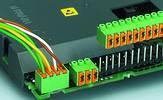
Spring cages - not just for copper cables
Spring cage connection is not only suited to electrical connections for copper cables - it can also be used to good effect for easy fibre-optic cable device connections. Phoenix Contact's FOPT fibre optic PCB terminal allows one to cut the fibre optic cable to length with a convenient cutting tool, then simply slot it into the terminal. A special torsion spring assembly centralises the cable in front of the integrated send/receive diode. A pressing tool enables one to just as easily remove the cable (Figures 5 and 6).
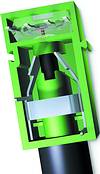
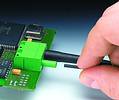
Conclusion
With the right design, spring cage connection technology, which has already established itself on the market, provides an interesting alternative to screw connections. It is essential, however, in order to use this technology universally in different devices, that it be optimised - in particular the springs, using CAD and other computer-aided processes such as FEM analysis. Only in this way can high contact quality be achieved in miniaturised structures.
For more information: Rob MacKenzie, Phoenix Contact, 011 793 7121, [email protected]
| Tel: | +27 11 801 8200 |
| Email: | [email protected] |
| www: | www.phoenixcontact.co.za |
| Articles: | More information and articles about Phoenix Contact |
© Technews Publishing (Pty) Ltd | All Rights Reserved